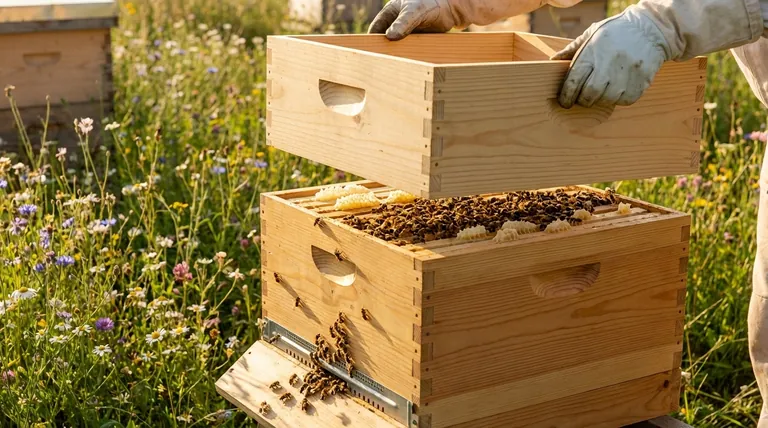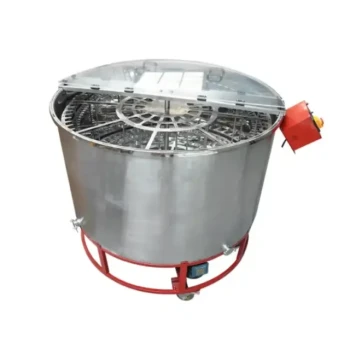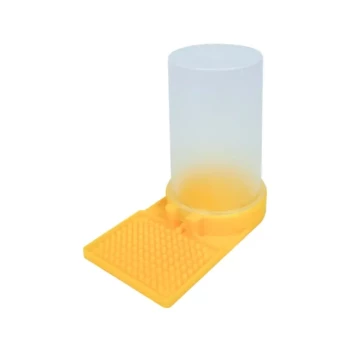To get bees to work on new frames in a honey super, three specific conditions must be met simultaneously. The colony must be strong and populous, the brood box below must be nearly full with bees and drawn-out comb, and there must be a significant external nectar flow. Without all three of these triggers, the bees will have no incentive or resources to expand upwards.
A honey super is empty real estate to a bee colony. They will only invest the immense energy required to build it out and fill it when their current home is overflowing and they have a strong, immediate income of nectar to fund the expansion.

The Foundation: A Strong and Crowded Colony
For a colony to even consider expanding, its current living quarters must be at capacity. This signals to the bees that they are running out of space for brood and food storage, creating the need for new territory.
Why Population Density Matters
A large workforce is essential for expansion. Building wax comb, foraging for nectar, tending to the queen, and regulating the hive's temperature are all labor-intensive tasks. A small or medium-sized colony simply does not have the surplus population to dedicate to building out a new super.
The "80% Rule"
A reliable rule of thumb is to add a super when the bees are actively using 80% or more of the frames in the top brood box. This means you should see frames packed with brood, pollen, and nectar, with bees covering the majority of the frame surfaces. This density is the internal cue that space is becoming a premium.
The Trigger: A Strong Nectar Flow
A crowded hive provides the need to expand, but a nectar flow provides the ability to expand. Without a strong, incoming supply of nectar, the bees cannot produce the wax necessary for building new comb.
Nectar as the Fuel for Expansion
Bees consume large quantities of honey or fresh nectar to activate their wax glands. It is an energetically expensive process. They will not begin producing wax unless they have a resource surplus, which only happens during a nectar flow. Adding a super when there is no nectar available is almost always ignored by the colony.
How to Identify a Nectar Flow
Look for clear signs of nectar abundance. You may see fresh, white wax appearing along the top edges of the frames in the brood box, a phenomenon known as "whitening." You will also observe a dramatic increase in flight activity at the hive entrance and may notice the distinct smell of nectar being cured.
Understanding the Common Pitfalls
Timing is everything in beekeeping. Adding a super requires balancing the risk of acting too soon against the risk of acting too late.
The Mistake of Adding Supers Too Early
If you add a super to a colony that is not strong enough or before the nectar flow begins, the bees will ignore it. This creates a large, empty space at the top of the hive that the colony must patrol and keep warm. This "chimney effect" wastes the colony's energy and can make the hive more vulnerable to pests like wax moths.
The Risk of Adding Supers Too Late
Waiting too long to add a super to a crowded, booming hive can trigger the swarm impulse. When the bees feel congested and have nowhere to store incoming nectar or for the queen to lay, their instinct is to divide the colony and find a new home. Adding a super at the right time provides this necessary space and can help prevent swarming.
The Impact of Foundation Type
Bees will occupy a super with drawn comb (frames with pre-built wax cells) far more readily than one with bare foundation (plastic or wax sheets). Drawing new comb is a massive undertaking. If you want to encourage a hesitant but otherwise ready colony, adding a frame or two of drawn comb among the new foundation frames can act as a powerful "ladder" to entice them upward.
A Practical Checklist for Adding Your Super
Use these points to decide when to act and how to troubleshoot a non-working super.
- If your primary goal is to prevent swarming: Add a super as soon as the top brood box is 80% full and you see the very first signs of a nectar flow starting.
- If you see no activity in your new super: Confirm all three conditions are still met. Is the brood box genuinely packed with bees? Is the nectar flow strong, or has it ended?
- If your colony is strong but there is no nectar flow: Do not add the super. You can consider feeding a 1:1 sugar-water solution to stimulate comb building if necessary, but understand this will not produce honey.
Ultimately, your success depends on observing your hive and aligning your actions with the colony's natural instincts for growth and survival.
Summary Table:
| Condition | Why It's Necessary | Key Indicator |
|---|---|---|
| Strong, Populous Colony | Provides the workforce needed for wax production and expansion. | Bees actively using 80%+ of frames in the top brood box. |
| Full Brood Box | Creates the internal need for more space, preventing swarming. | Frames packed with brood, pollen, nectar; bees covering surfaces. |
| Active Nectar Flow | Supplies the energy (nectar) required to produce wax for new comb. | Increased flight activity, fresh white wax on frames, smell of curing nectar. |
Equip your apiary for success with HONESTBEE.
As a commercial beekeeper or distributor, your profitability depends on efficient hive management and maximizing honey production. Ensuring your bees properly utilize honey supers is critical. HONESTBEE supplies the durable, high-quality beekeeping equipment—from durable honey supers and frames to essential tools—that supports strong colony growth and expansion.
Let us help you build a more productive and profitable operation. Contact our wholesale experts today to discuss your equipment needs and get a quote.
Visual Guide

Related Products
- Langstroth Honey Bee Box Hive Boxes for Different Depths
- Professional 500g Sectional Comb Honey Frame System for Beekeeping
- Automatic Heat Preservation 6 Frame Pro Nuc Box for Honey Bee Queen Mating
- Economy Small Scale Honey Dryer Dehumidifier Thickening Machine
- Australian Langstroth Beehive Boxes for Beekeeping Wholesales
People Also Ask
- What are the sizes available for Langstroth boxes? A Guide to 8-Frame vs. 10-Frame & Depths
- What factors should beekeepers consider when choosing between wooden and polystyrene hives? Maximize Bee Health and Honey Production
- How is checking honey supers in a Langstroth hive different from inspecting Honey Flow supers? A Guide to Disruptive vs. Non-Invasive Methods
- What is the best time to inspect a hive? Optimize for Bee and Beekeeper Safety
- How should hive boxes be aligned after reassembly? Ensure a Perfect Seal for Hive Health



















